This age-old recipe for preserving spicy peppers in vinegar, handed down from the past, requires only two ingredients: spicy peppers and plain, cold vinegar. These pickled hot peppers can last for years in jars and serve as a flavorful addition to soups and stews.
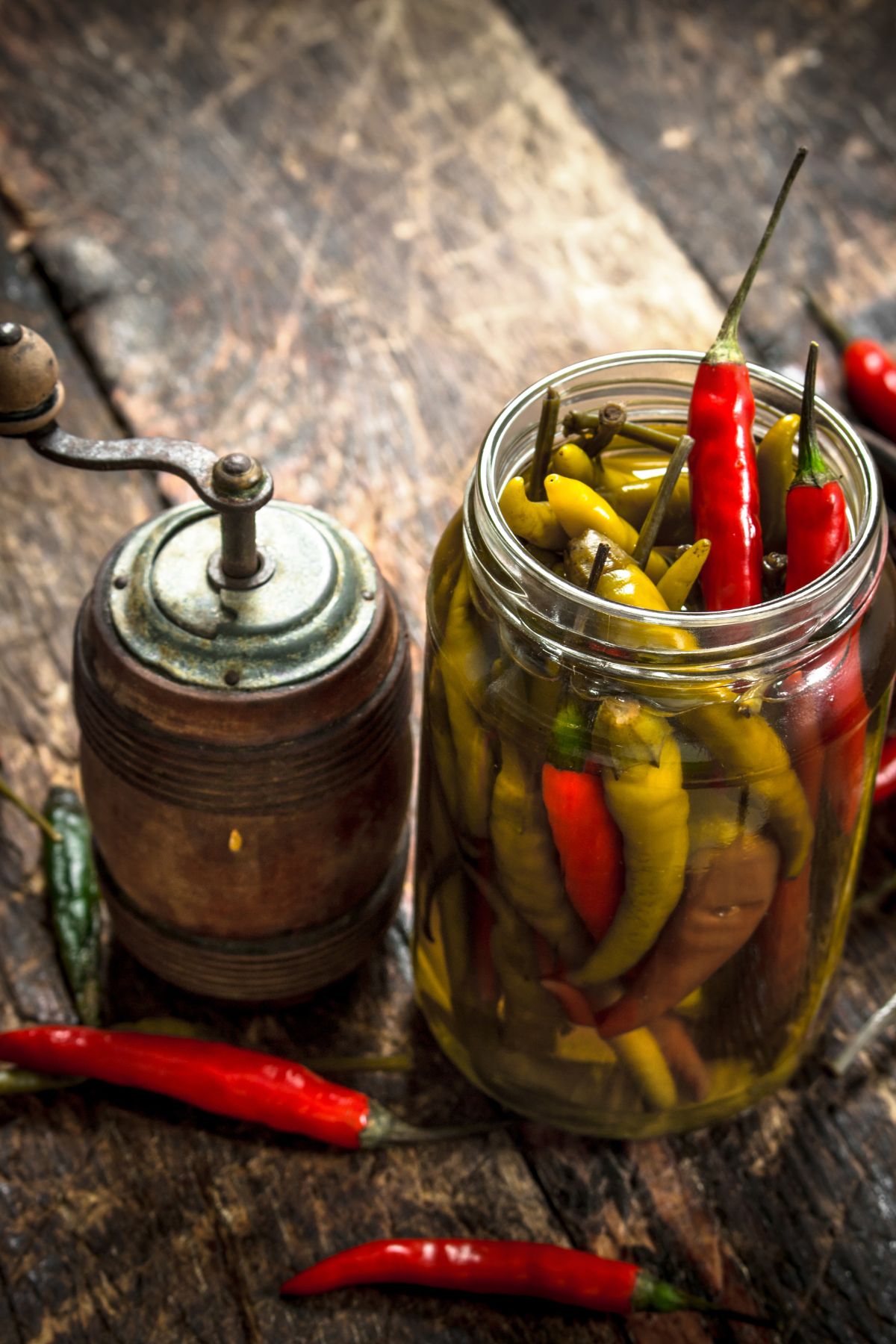
Pickling peppers is a great way to preserve peppers when you can't eat them all at once. This recipe uses a simple process of pickling that doesn't require any cooking or heating and only a few minutes to prepare.
This hot peppers recipe is part of my canning collection. If you like this recipe, you might also like this article about how to salt preserve herbs, where I show you a great technique to preserve beautiful dill or other herbs for the cold season.
Also, this Red Peppers in Mustard Sauce recipe is a great way to preserve red peppers and serve them with roasted meats in winter. And finally, let's not forget about my Pickled Cucumbers In Vinegar , this super easy recipe to use for making pickles.
Jump to:
What is Cold Vinegar Preservation?
This pickling process differs from traditional canning, which requires heating or cooking the jar under pressure and where jars make a 'pop' sound upon opening. Instead of hot water bath processing, we use cold vinegar so the jars don't seal in the same way.
Using only vinegar, it's an easy way to preserve the peppers for years without needing a vacuum seal. Just ensure your jars are clean and closed tightly before storing and your peppers will remain well-preserved, providing you with a delicious way to add heat to dishes for years, even without the 'pop'.
⭐️ NOTE: This particular recipe for preserving peppers is meant for spicy peppers that serve as condiments for winter soups and stews. It is NOT intended for bell peppers, cauliflower, carrots, beans, or cucumbers. For other uses, you might need to seek other preservation methods, as this recipe might not suit your needs.
Why You Will Love This Hot Peppers Recipe
- Easy Preparation! The jars don't require a water bath because the vinegar effectively eliminates botulism as long as you use a vinegar with at least 5% acetic acid.
- A Simple Way to Add Heat Throughout the Year. I follow this process every autumn to preserve spicy peppers. These peppers are a fantastic way to add a bit of heat to any soup or stew, like this traditional Saxon potato tarragon soup.
- Long Lasting Method. When they're stored properly, your preserved peppers can last for years on the shelf.
- Give Them Away. The vibrant and colorful jars make great holiday gifts for family and friends.
Ingredients
To make these canned hot peppers, you need only two simple ingredients. Here's a brief look at what you need.
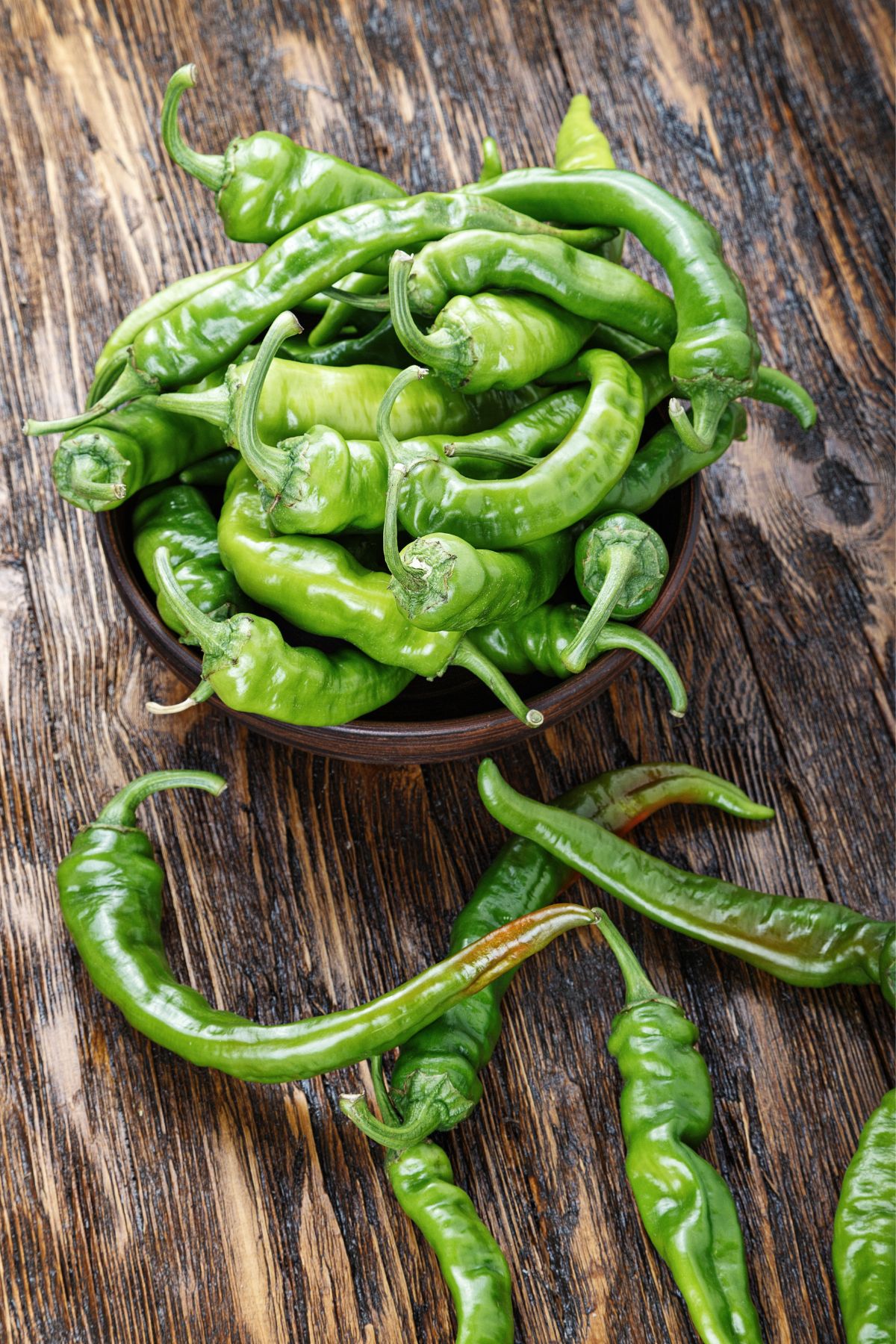
- Hot peppers: There's a wide variety of spicy peppers that work well in this hot pepper recipe! See below to pick your favorites.
- Vinegar: White wine vinegar or apple cider vinegar work great, though you can use any type of vinegar that contains at least 5% or more acidity.
- Jars: You will need to have Mason jars or the equivalent with screw top lids for this pickling recipe.
🌶️ What kinds of hot peppers are best for cold pickling?
There are many varieties of peppers suitable for making easy pickled peppers. It works well with both large and small peppers. I've listed a few:
- Jalapeno peppers
- Fresno chili peppers (not the Fresno Bell pepper)
- Serrano peppers
- Habanero peppers
- Cayenne peppers
- Thai (Bird's eye chili peppers)
- Aleppo peppers
- Shishito peppers
- Tabasco peppers
- Ghost peppers
- Hungarian Wax peppers
- Dutch Red chili peppers
- Peri-Peri peppers
- Scotch Bonnet peppers
- Banana peppers
How to Make Canned Hot Peppers
There are a few important steps that you will want to follow when using this method of canning. It's a simple recipe, but here's a look at the process.
- Clean the jars. The jars need to be sterilized before you can add the peppers. Place the jars in a large pot of boiling water for ten minutes. Once they're sterilized, remove and drain the jars one at a time.
- Wash peppers. Be sure to remove leaves and dirt from the peppers. If you notice any peppers with dark blemishes, you will want to remove them.
- Pack peppers into jars. Place the peppers in the jars, packing them in gently so that they fit tight inside. You can do this with whole or sliced peppers. I like to use whole peppers if they're small enough, while large peppers might work better sliced.
- Add the vinegar. Pour the vinegar over the peppers, covering them completely, and fill all the way up to the top of the jar. Add the lid and tighten the screw band on the jar.
- Let them sit. The peppers need to sit in vinegar for at least one month before they are ready to be consumed.
How to Store
Store your jars of hot pickled peppers in a cool pantry, cellar, or unheated basement. They need to be kept cool and not exposed to sunlight or too much warmth.
After opening a jar, they must be stored in the refrigerator. While vinegar is a great preservative, it's a good idea to throw them out once they've been sitting in the fridge for a few months.
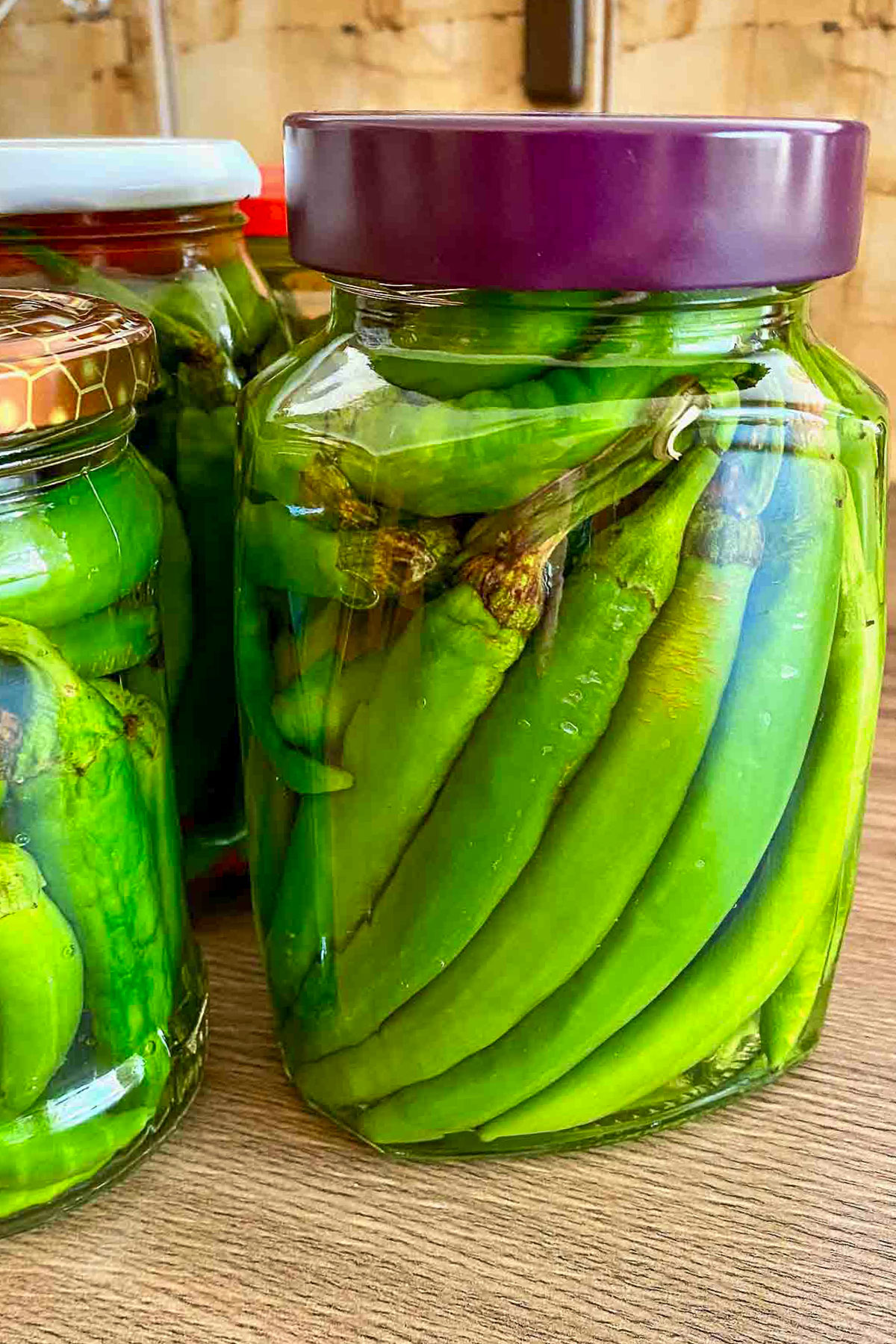
How to Serve Hot Peppers
These pickled peppers make a fantastic addition to soups and stews. Serve a jar of hot peppers next to these hearty soups and stews. They can be eaten whole and enjoyed along with the soup or sliced and added to the soup. It all depends on how spicy you prefer your food.
Soups:
- Smoky Black Bean Soup
- Beef Vegetable Soup
- Chicken Soup With Sour Cream And Garlic
- Romanian Meatballs Sour Soup
Stews:
You can even use the juice! The flavored vinegar can also be added to soups, marinades, sauces, or dressing to add a bit of spiciness.
The peppers can be sliced and added to tacos or sandwiches, as a topping to pizza, in salads, or as an extra heat for grilled meats, fish, or even eggs.
Expert Tips
Several readers inquired about the preservation process for this easy recipe.
- The jars must be clean before filling. Wash them with warm water and soap or run them through a dishwasher cycle. Sterilize them thoroughly. If you need more information about the process check here for more about the sterilization process.
- Sterilize the lids separately. Avoid placing them with the jars in the same pot. I usually clean them with warm water and soap, dry them well, and then submerge them in boiling water for at least 2 minutes.
- Use new lids. If any lids seem old or rusty, you will need to replace them. While recent guidelines no longer recommend boiling lids, I suggest submerging them in hot water for a few minutes before use for added safety. You can learn more about the new canning guidelines if you're interested.
- Cover with vinegar. The peppers and their stems should be fully covered with vinegar. Use vinegar with at least 5% acidity, and do not dilute the vinegar solution. Vinegar effectively combats botulism, so it's crucial to follow the recipe accurately.
- Cleaning the peppers. Wash the peppers and leave their stems left intact. While you can trim the stems, there's no need to remove them completely. If you decide to slice the peppers, it's a good idea to wear plastic gloves to prevent transfer of the spicy juices to your fingers.
- Do not add other ingredients. Adding extra ingredients such as herbs, spices, or other vegetables will change the recipe. It's best that you find a recipe that includes these additions.
- No boiling. This process uses cold vinegar, so note that you will not need to boil or heat the vinegar.
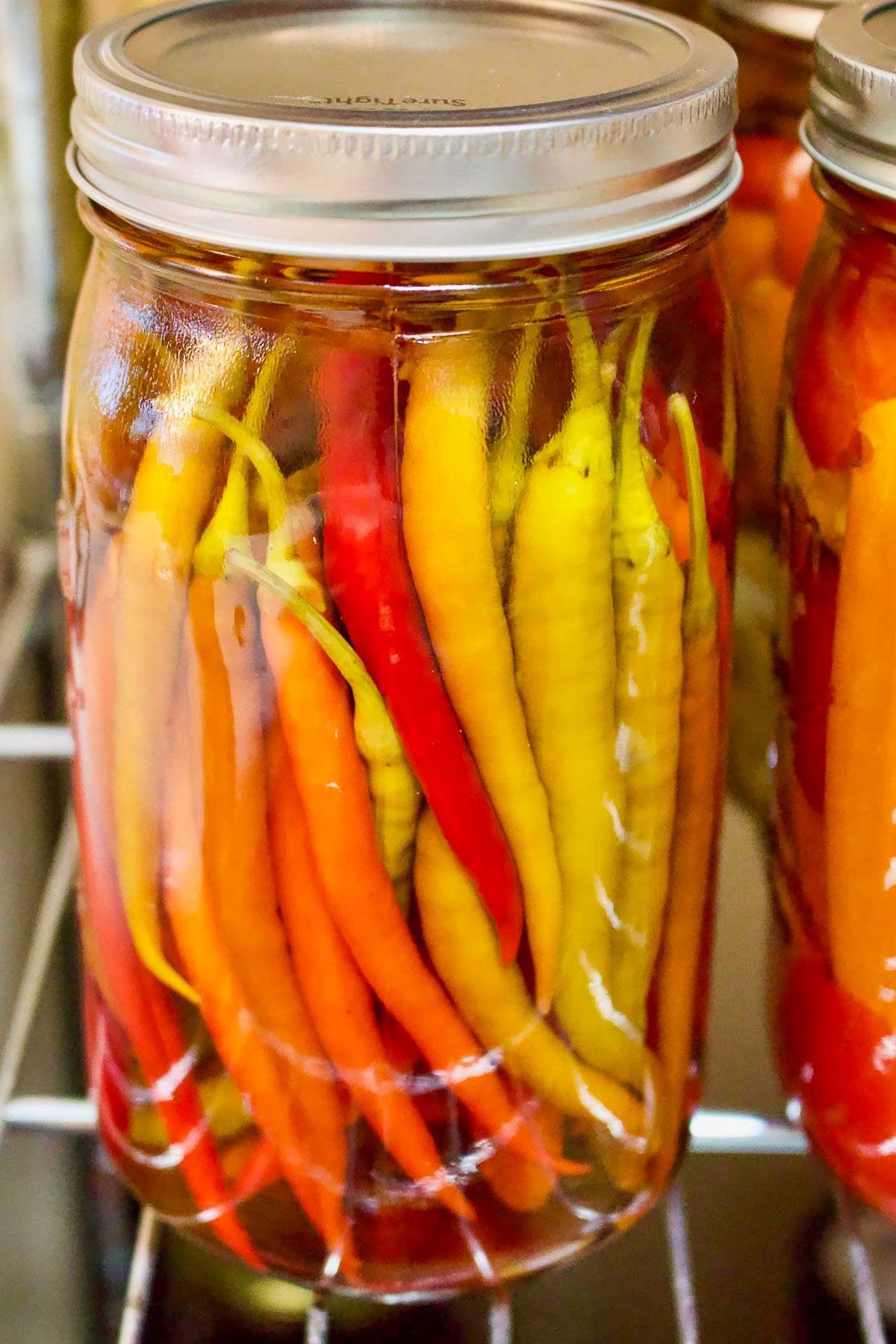
Frequently Asked Questions
Here are answers to some of the most frequently asked questions:
No, the jars do not need either process, as the vinegar prevents fermentation. The peppers can be preserved for years without any issues. Simply sterilize the jars before filling them.
No, I do not put them together with the jars. I clean them in warm water with soap and dry them well. Then, I boil some water and add the lids to sit in the hot water for two minutes.
The new guideline does not even recommend boiling the lids, but for my peace of mind, I think you should place them in hot water for at least a few minutes before you use them. Here is a link to the guidelines on boiling lids for canning if you want to read more.
Unfortunately, no, you can't do that. This is a canning method and not for quick pickles or refrigerator pickles. The results would be peppers at different stages of the pickling process. This will also create a great environment for bacteria to develop because you keep opening the sterilized jar to add more peppers.
The best solution is to use small pint jars and cut the recipe in half or a quarter to preserve a small batch of peppers. Other options to preserve peppers are to dry or freeze them.
For best results, pack the peppers into the jar either right up next to each other or, if sliced, fill the jar. Pack them tightly, but be gentle and avoid crushing them. This will keep them from floating in the jar.
Pin This For Later
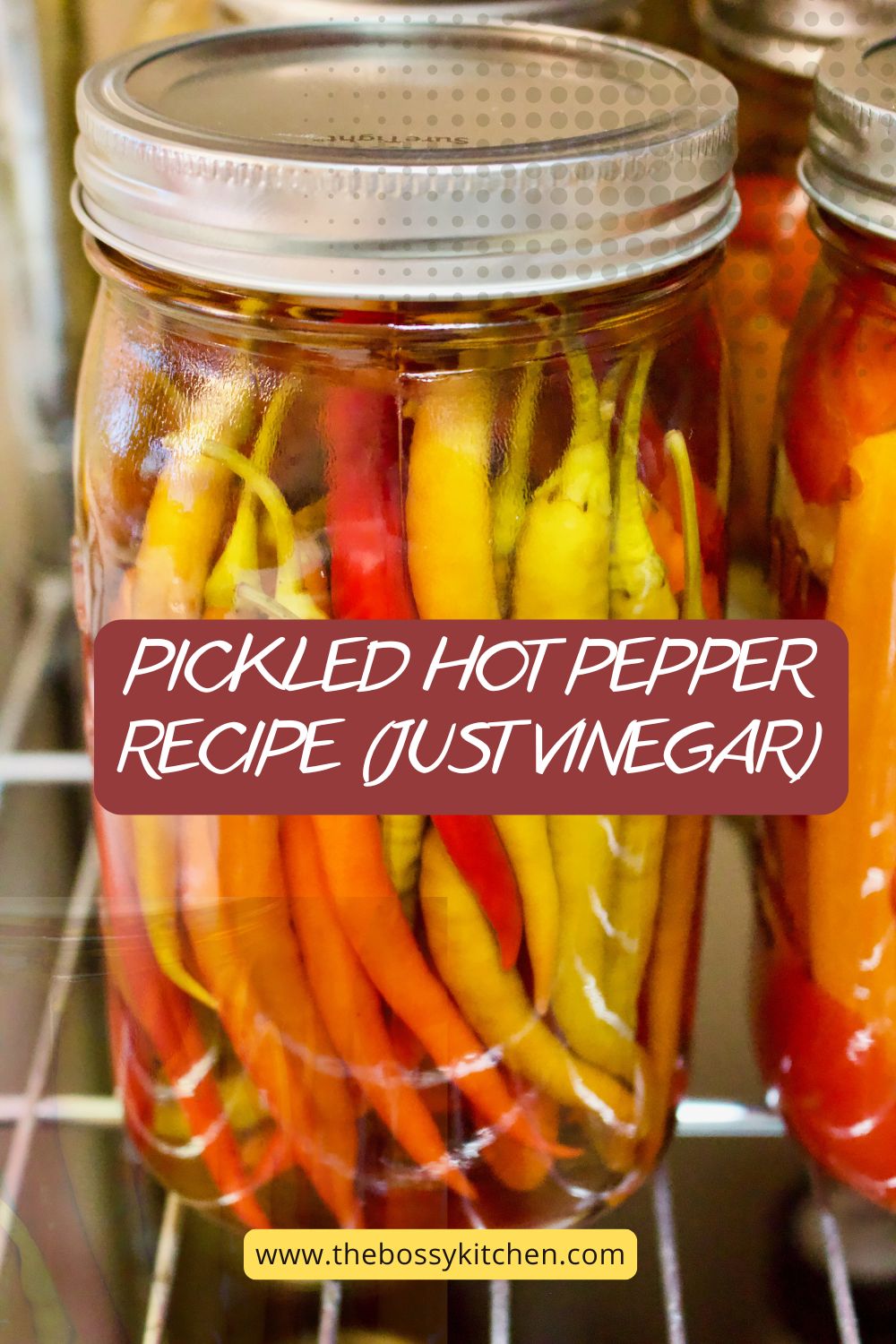
More Canning and Pickling Recipes
📖 Recipe
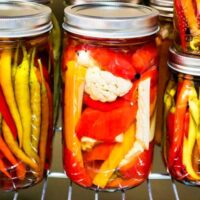
Canning Hot Peppers in Vinegar - Easy Recipe
Ingredients
- 1 pound hot peppers
- 14 ounces white wine vinegar or apple cider vinegar with at least 5% or more acidity
- sterilized jars and lids
Instructions
- Clean the jars. The jars need to be sterilized in a boiling water bath for 10 minutes in a pot of water on the stove.
- Wash and clean the hot peppers. Remove leaves, dirt and any bad peppers. Slice peppers if desired though I prefer leaving them whole.
- When the sterilizing time is up, remove and drain the hot jars one at a time.
- Place peppers in jars, packing them in and adding as many as possible until they fit tight inside.
- Pour vinegar over them to fill up the jars. Add lids, and tighten screw bands.
- The peppers need to sit in vinegar for at least one month before they are ready to be consumed.
- Great with soups or as a condiment in stews. Prepared peppers last in a cool place for years.
Video
Notes
- The jars must be clean before filling. Wash them with warm water and soap or run them through a dishwasher cycle. Sterilize them thoroughly. If you need more information about the process check here for more about the sterilization process.
- Sterilize the lids separately. Avoid placing them with the jars in the same pot. I usually clean them with warm water and soap, dry them well, and then submerge them in boiling water for at least 2 minutes.
- Use new lids. If any lids seem old or rusty you will need to replace them. While recent guidelines no longer recommend boiling lids, I suggest submerging them in hot water for a few minutes before use for added safety. You can learn more about the new canning guidelines if you're interested.
- Cover with vinegar. The peppers and their stems should be fully covered with vinegar. Use vinegar with at least 5% acidity and do not dilute the vinegar. Vinegar effectively combats botulism, so it's crucial to follow the recipe accurately.
- Cleaning the peppers. The peppers should be washed and cleaned with their stems left intact. While you can trim the stems there's no need to remove them completely. Wear gloves if you're slicing the peppers and wash hands immediately following handling them.
- Do not add other ingredients. Adding extra ingredients such as herbs, spices, or other vegetables will change the recipe. It's best that you find a recipe that includes these additions.
- No boiling. This process uses cold vinegar so note that you will not need to boil or heat the vinegar.

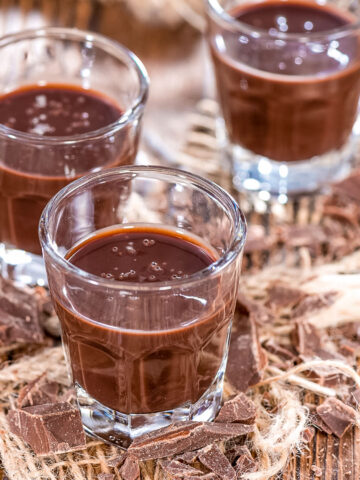
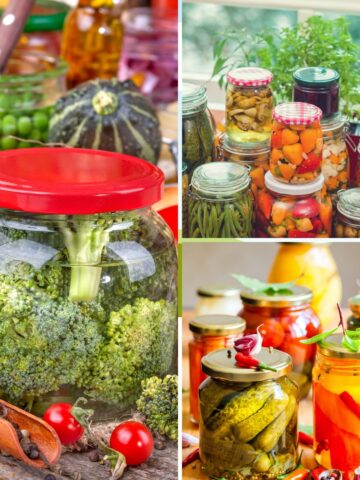
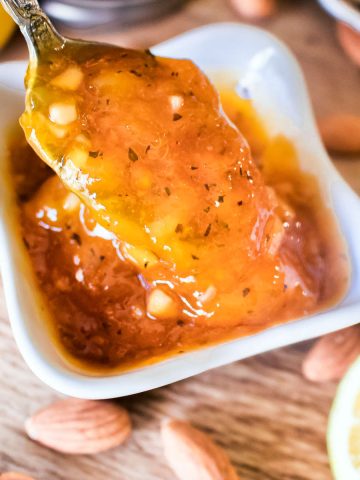
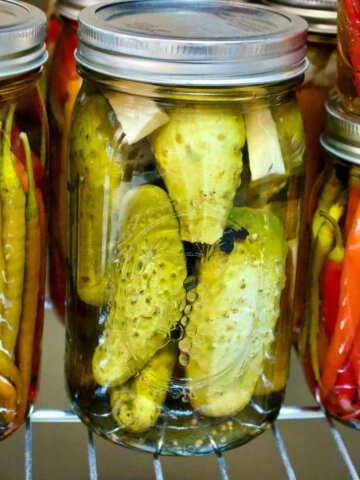
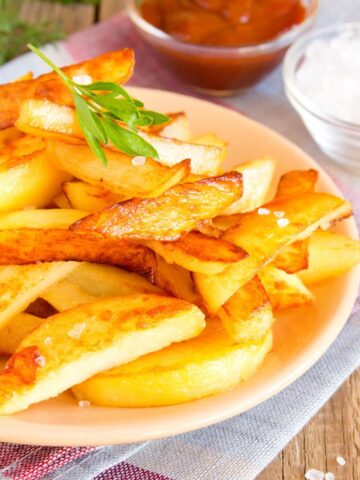
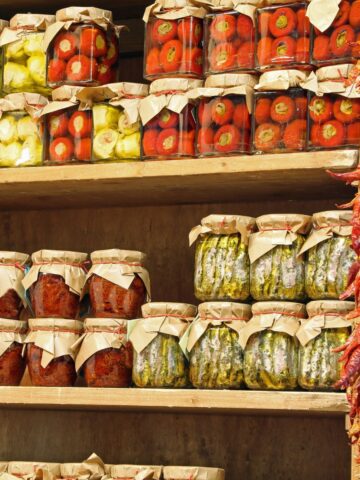
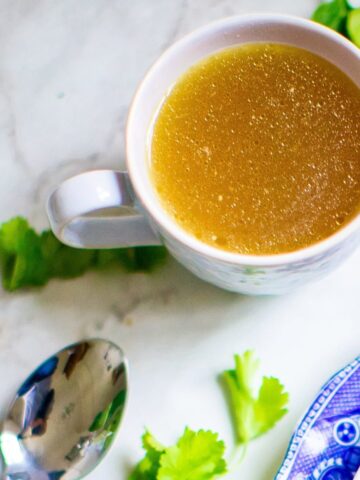
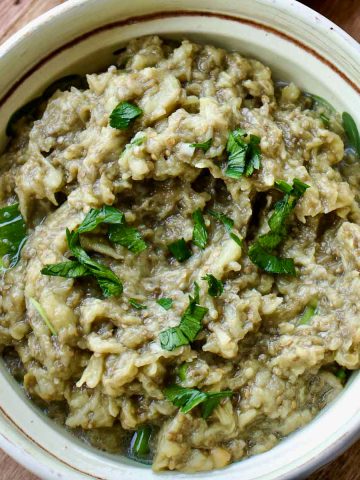
Michael says
I just happened to search for and received the easiest way to preserve my reaper peppers.
And I have been laughing out loud the entire time at the people who INSIST on deferring from the obvious!!
Your responses KILLED me, thanks for the chuckle and the recipe!!
The Bossy Kitchen says
:-)) Thank you, Michael! I really appreciate your comment!
Roxa says
I have never enjoyed myself more reading Q&A's.
Got any more "stand up" recipes? I'm all in. So can I add a pound of salt use different lids boil it in toilet water and use plastic jars? Are hot peppers a must or can I use corn? Thanks
.
Gabriela says
I'm thrilled to hear you're enjoying the Q&A's - they're a bit like a cooking comedy club, aren't they? 😂
A pound of salt might make your peppers (or corn, if you're going that route) more reminiscent of the Dead Sea than a delightful condiment. However, if you're planning on preserving your peppers for a millennium or two, that might just do the trick.
Boiling in toilet water? Hmm, while I'm all for creative cooking, I think that might add a certain je ne sais quoi that's not quite in line with the flavor profile we're aiming for.
Corn could be an interesting twist. Just be prepared for a milder, sweeter result. It might not have the same kick, but hey, not every comedian tells spicy jokes, right?
Thanks for your humor, you made my day! :-))
Leon says
Can i use food grade plastic buckets ?
The Bossy Kitchen says
Hi Leon, I do not have experience with food grade plastic buckets. I only used glass jars, as they are easier for me to handle after I open them. They also seem to be more sanitary, as you can sterilize them before.
Joseph says
Bin following your recipe for a few years. great one , eating last years and doing my first jar this week using my favorite skinny long pepper called garden salsa. they are available on chili plants.com live plants,,
deb says
love the recipe, very simple. love more your answers to questions!!! you are my kind of person, thank you and God bless you and yours.
The Bossy Kitchen says
Thank you, Deb.
Tammie Cosbie says
Do they seal like other canning items. I'm new to canning.
Tisa says
I've been doing this for 40 yrs but this year I'm having memory problems. Thank you for sharing your recipe, I was able to remember how I did it. I also printed it for next year. LOL Have a blessed day!
Marilyn DeCarteret says
Will straight 5%vinegar cause the metal caps to rust and cause problems?????
The Bossy Kitchen says
They will rust if you fill the jars too much to the point where vinegar touches the caps.
Cathy says
Can you use these peppers in a salad or on sandwiches?
The Bossy Kitchen says
Yes. You can use them to flavor soups and stews. You can chop them small and add them to a salad or a sandwich. Spicy peppers will stay spicy in vinegar. We like them in winter with hot soups and stews, but you can use them in many ways.
Jane says
Thank you for this. I'm putting up my annual 20lbs of Hatch chiles and will do it this way rather than freeze them. I will however roast and peel them first.
The Bossy Kitchen says
I never roasted and peeled the chiles before using them in this recipe, so I cannot tell you if it is a good idea or not. I would, however, be curious to see what you come up with! Please write back and let me know!
tk says
can u put carrots in it too
The Bossy Kitchen says
The article explains in detail what you need to do.
Harvey Norris says
I plan to eat these whole out of the jar. Is this recipe good for that?
The Bossy Kitchen says
Yes, the recipe is exactly for that. We eat them with soups and stews, in sandwiches etc.
Harvey Norris says
If you do whole cayenes,do you need to cut the tops or slit them?
The Bossy Kitchen says
No, you don't need to do anything to them.
First time doing it this one. says
I've sterilized jars, lids and did cut the stems and put it all together. I did boil the vinegar and poured it in. Looks beautiful. I am curious - do you think a few seeds floating make a difference in it staying 'safe'? (again, I boiled the vinegar and poured to top of jars.
Gabriela says
They will be fine, no worries.
Jeanette says
Do the lids Seal when done ?
The Bossy Kitchen says
They do not, as we do not do a water bath on them. Just close them tight. They should be fine. I explained in the article why.
Beth says
Hi I was wondering if the jars need to seal after putting lids on peppers and vinegar?
Gabriela says
No, they don't need to.
Rocco says
After packing tightly and covering with vinegar they loosened up and it looks like some are not completely covered, should I pray they’ll be ok or can I open and add some more vinegar. I have them in the basement, not the fridge, thank you in advance.
Gabriela says
You can open them and add some more. Make sure you close them tight.
Joni says
Thank you! I had forgotten some of my wonderful mother's ways if keeping those summer flavors alive throughout the winter. And, often, it was all we had. I hope our younger gen will take heed to the many methods of storing food and enjoying the quality and variety of tastes year round. Again, thank you and bless you!
Joni
Joni says
I like you. I had a nurse that reminds me of you. Straightforward and to the point. Love it! And, thanks for saving me lots if great peppers!
Joni